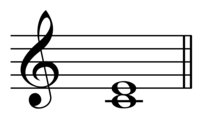Tuning theory

Tuning theory is about how we make music sound really good. To do this, we use something called a scale, which is a group of musical notes that sound good when we play them together.
Think of it like baking. When we're baking a cake, we need to measure out the ingredients in the right amounts so that it tastes delicious. In music, we need to measure out the notes in the right way so that it sounds good.
Now, different people in different parts of the world have come up with different scales. Some scales have more notes (like the Indian raga) and some have fewer notes (like the pentatonic scale in Chinese music). But no matter the scale, it always has a pattern where some notes sound better together than others.
Sometimes the pattern of notes is in a straight line (like the piano keyboard), and sometimes it's in a circle (like the Indian Sargam or the Western Circle of Fifths). These patterns help us to remember which notes go together and which don't.
Tuning is also important when it comes to playing music. When we play an instrument like a guitar or a piano, we need to make sure that each note is in tune. This means that the note is at the right pitch, or frequency, for the scale we're using. We use something called a tuning fork or a tuner to help us get the notes in tune.
So in summary, tuning theory is all about making sure the notes we play in music sound good together by using a particular scale and getting each note in tune. It's like measuring out ingredients for a cake so that it tastes yummy.
Think of it like baking. When we're baking a cake, we need to measure out the ingredients in the right amounts so that it tastes delicious. In music, we need to measure out the notes in the right way so that it sounds good.
Now, different people in different parts of the world have come up with different scales. Some scales have more notes (like the Indian raga) and some have fewer notes (like the pentatonic scale in Chinese music). But no matter the scale, it always has a pattern where some notes sound better together than others.
Sometimes the pattern of notes is in a straight line (like the piano keyboard), and sometimes it's in a circle (like the Indian Sargam or the Western Circle of Fifths). These patterns help us to remember which notes go together and which don't.
Tuning is also important when it comes to playing music. When we play an instrument like a guitar or a piano, we need to make sure that each note is in tune. This means that the note is at the right pitch, or frequency, for the scale we're using. We use something called a tuning fork or a tuner to help us get the notes in tune.
So in summary, tuning theory is all about making sure the notes we play in music sound good together by using a particular scale and getting each note in tune. It's like measuring out ingredients for a cake so that it tastes yummy.
Related topics others have asked about:
